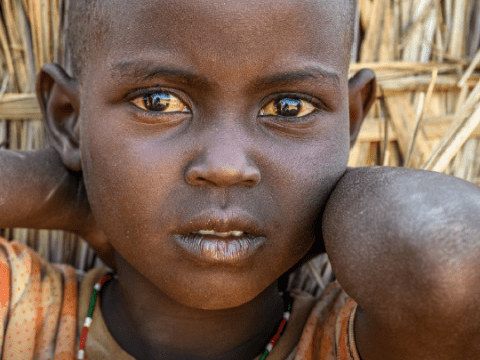Global survey reveals food prices vastly outpacing inflation as millions of children at risk of death from hunger

- In Sudan, food prices have increased 143% since 2021 a year after the FAO’s global food price index saw its highest ever annual increase.
-
A common basket of food items costs 17.2 days’ work in the Democratic Republic Congo, compared to just 1.3 hours in the Netherlands.
-
An estimated 45 million children under 5 are so thin for their height (wasted) they're at heightened risk of death.
13th October 2022 – A new report by international aid agency World Vision highlights how spiralling food prices are contributing to a global hunger crisis and placing children at increased risk of death.
“Food prices have increased globally over the past few years as the world grapples with the triple crisis of COVID-19, conflict, and climate change,” said Mary Njeri, World Vision’s Global Hunger Response Director. “Most people around the globe are experiencing the impact of increasing food prices, but for some, they have potentially deadly consequences – almost 50 million children are now so thin for their height that they’re at increased risk of death. The numbers of acutely hungry people have already gone up by 25% since the beginning of the year, and unless we take urgent action, more families will struggle to feed themselves, too.”
World Vision’s research found that there had been an overall increase of 14% in food prices in the past year. Rises have been especially sharp in some of the poorest countries, especially those reliant on imports or affected by climate change. For example, while there has been a 5% increase in the UK in the past year, food prices have increased by 143% in Sudan, 42% in Ethiopia, and 33% in Angola since 2021. In the Solomon Islands, rice and dairy prices have tripled since 2021.
Globally 345 million children and families are acutely hungry and struggling to get enough to eat. Hunger is widespread, but children living in a conflict zone are two times more likely to be malnourished. The cost of a basic shopping basket for an average worker helps illustrate the disparity – someone in conflict-affected DRC will have to work for 17.2 days to afford the same food someone could earn in 1.7 hours in Singapore.
“In Somalia, it would take a worker two weeks to earn enough money to buy a basic food basket – this is completely unattainable for the average family, and shows just how important it is to both get to grips with the big factors at the root of these crises – political will to end conflicts and fight climate change – and to provide the lifesaving aid children and families need to survive in the immediate term. The international community must urgently scale up life-saving aid efforts to reach the 50 million people facing emergency and catastrophic levels of hunger today. Going forward, they must support efforts to create the foundations for improved security and humanitarian access by engaging with all parties to conflict, and provide support for climate change adaptation practices while fighting to keep global warming to 1.5˚C, so we can reduce the risk of any hunger crises like this happening again in the future”
“We always say never again, but families are currently on the edge of a devastating crisis, and make no mistake, unless we act, children will die of hunger. There is enough money and food in the world. No child should be going hungry in the 21st century; we must act now.” Mary Njeri concludes.
ENDS
For more information, please contact:
Niamh Cooper, Director of Public Engagement, Email: niamh_cooper@wvi.org | Skype: Niamh.cooper5 | Phone: +353 87 942 337
World Vision is a Christian humanitarian and development organisation dedicated to working with children, families and their communities to reach their full potential by tackling the root causes of poverty and injustice.
World Vision serves all people, regardless of religion, race, ethnicity or gender. For more information, please visit www.wvi.org or follow us on Twitter @WorldVision
Notes:
Follow-up survey of food prices conducted across 37 countries was conducted in August–September 2022, and the full report is available here.
The 2021 report can be found here: Price Shocks: How COVID-19 is triggering a pandemic of child malnutrition and what is needed to prevent this from happening.